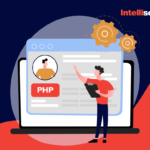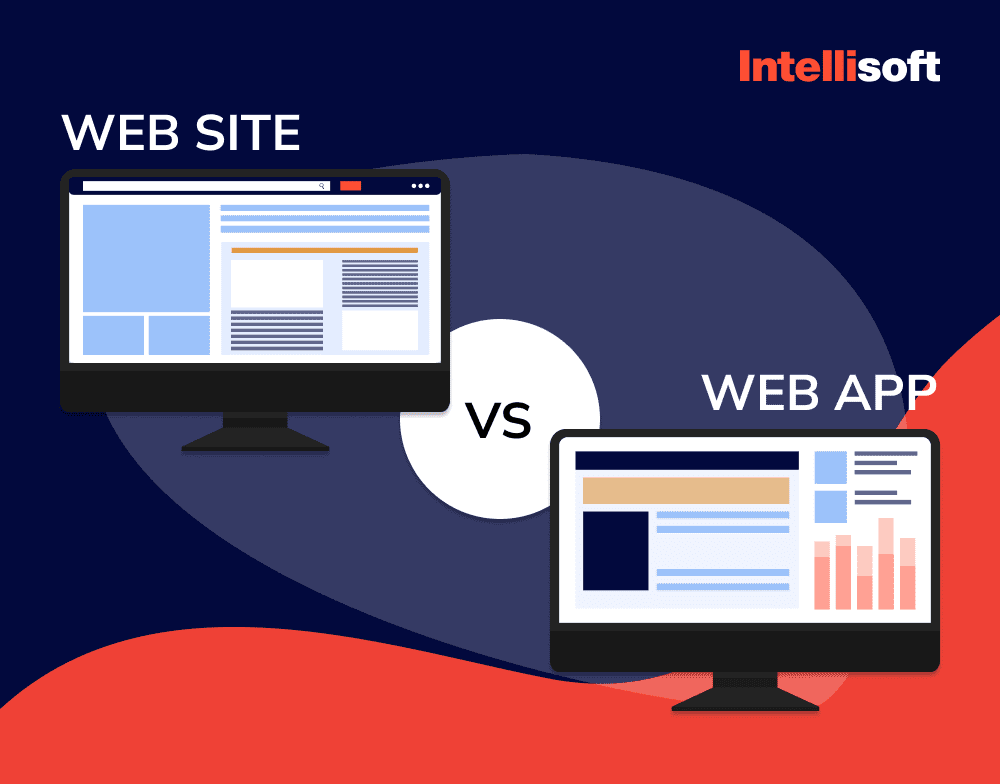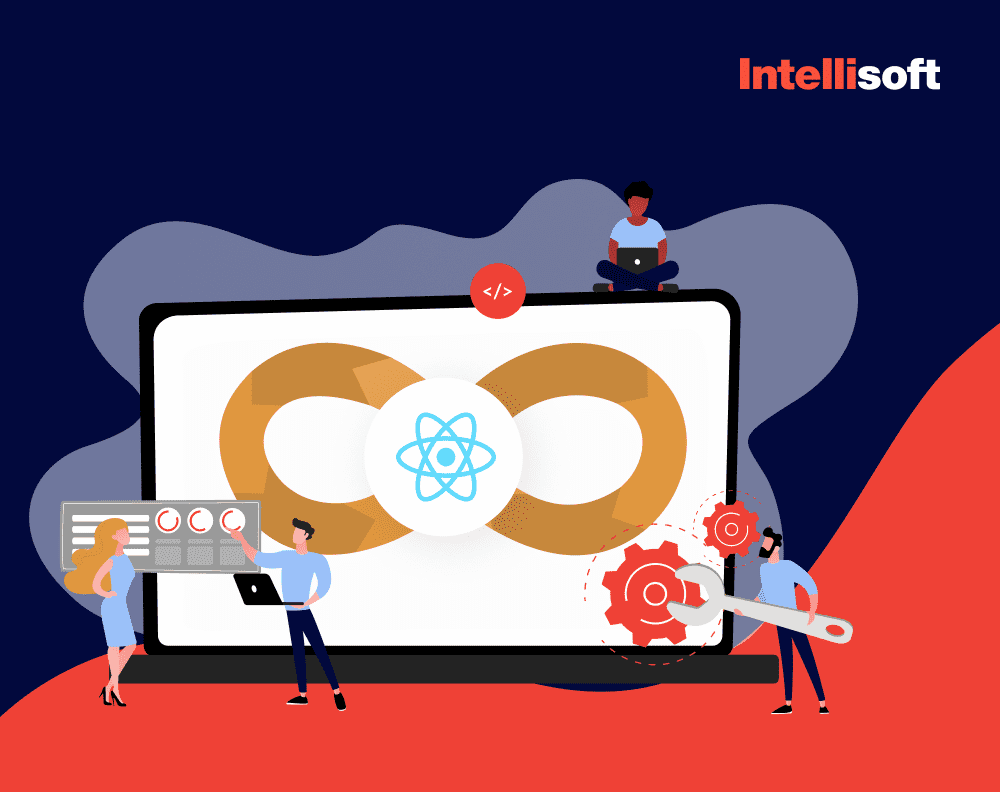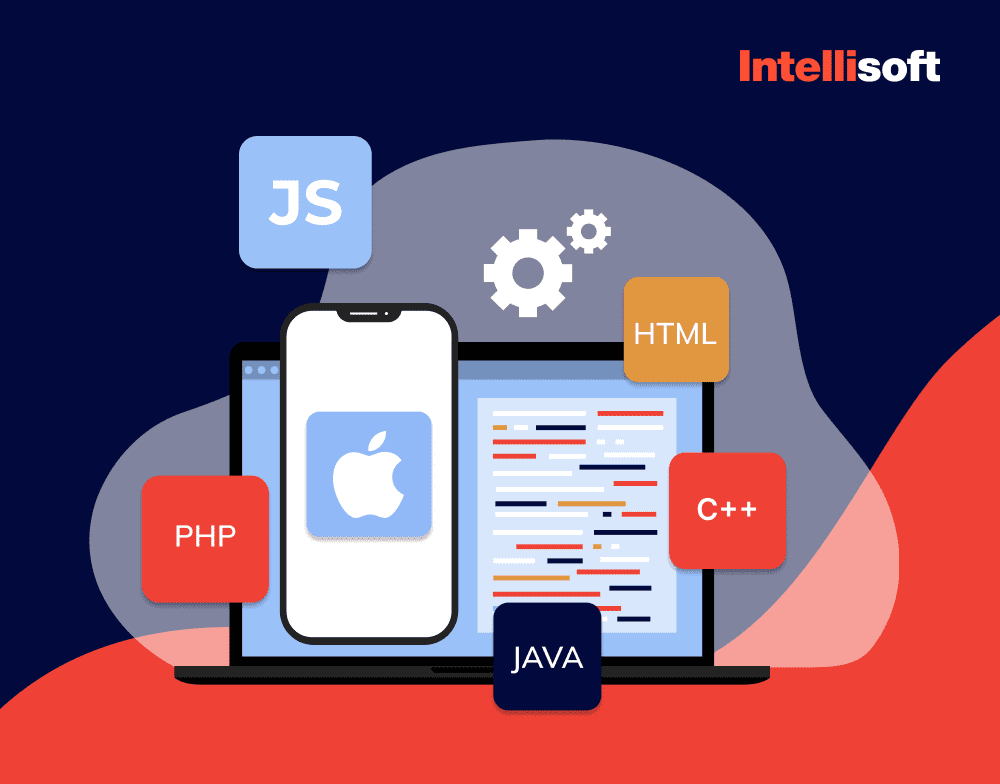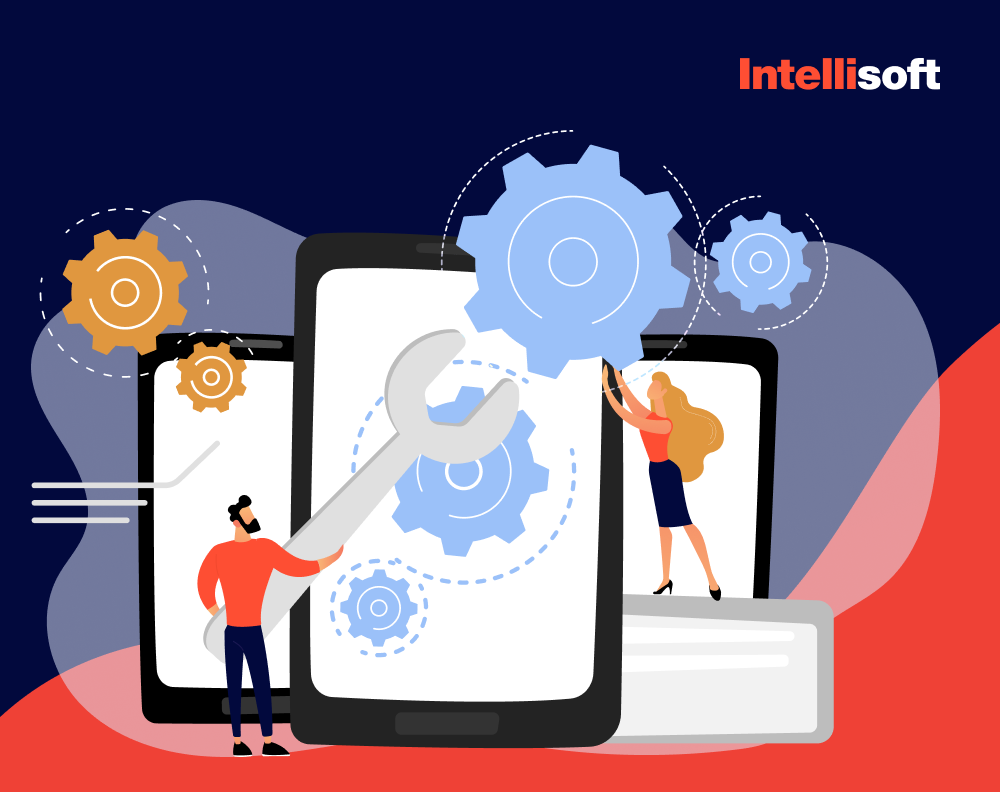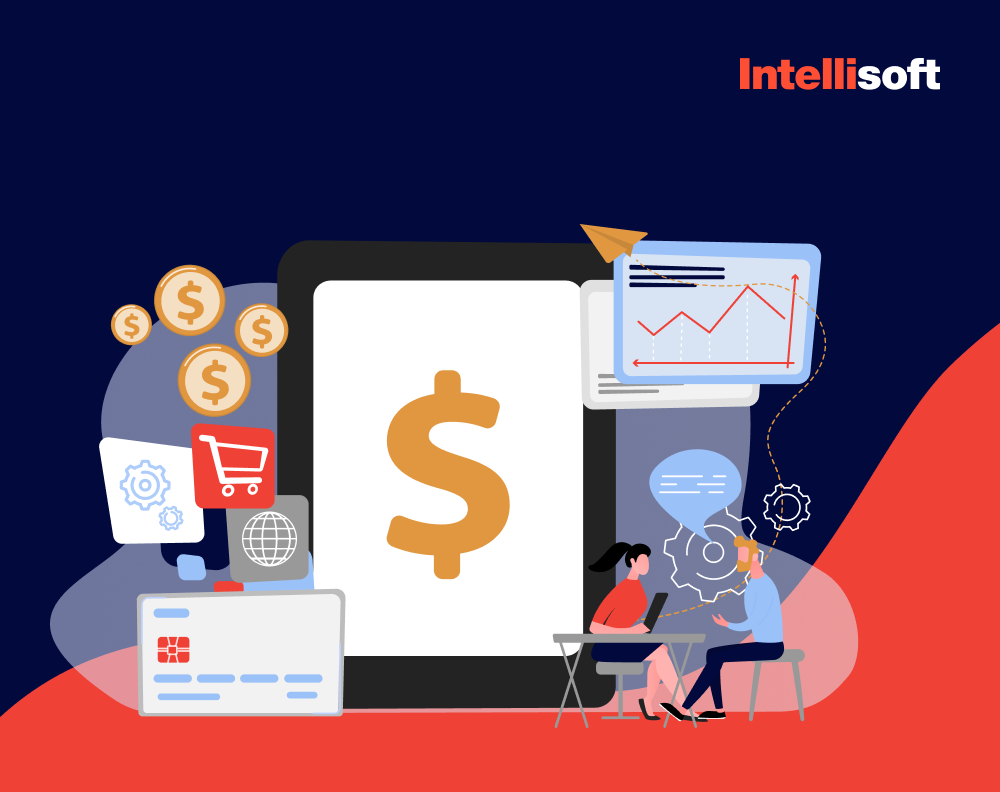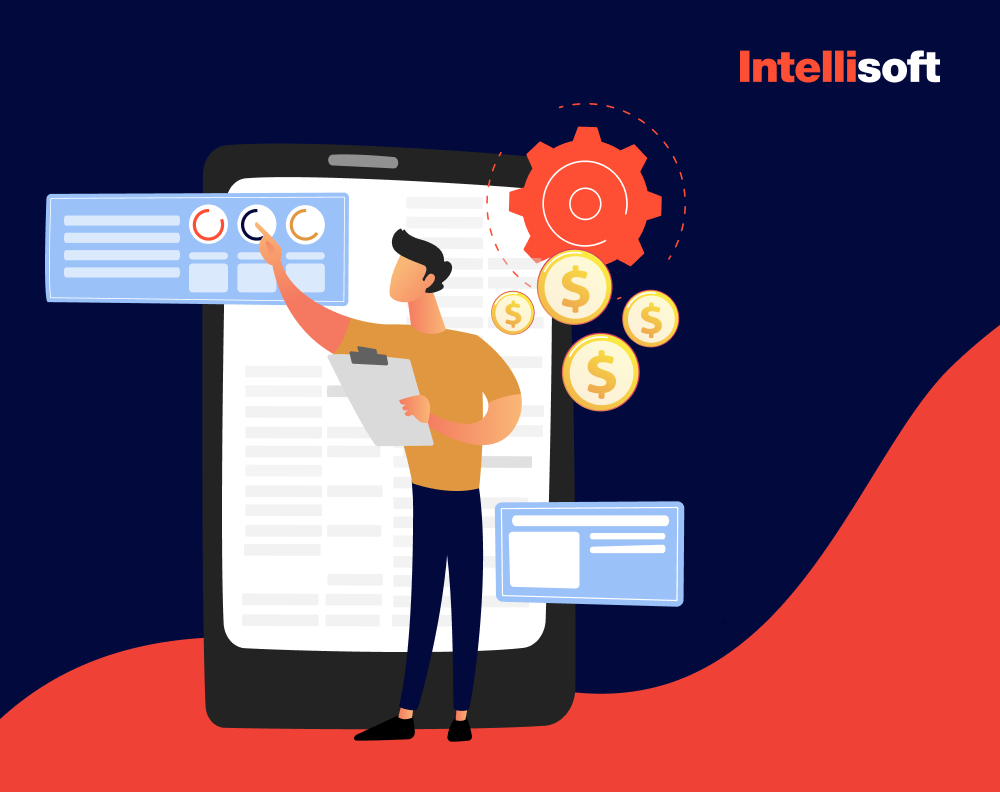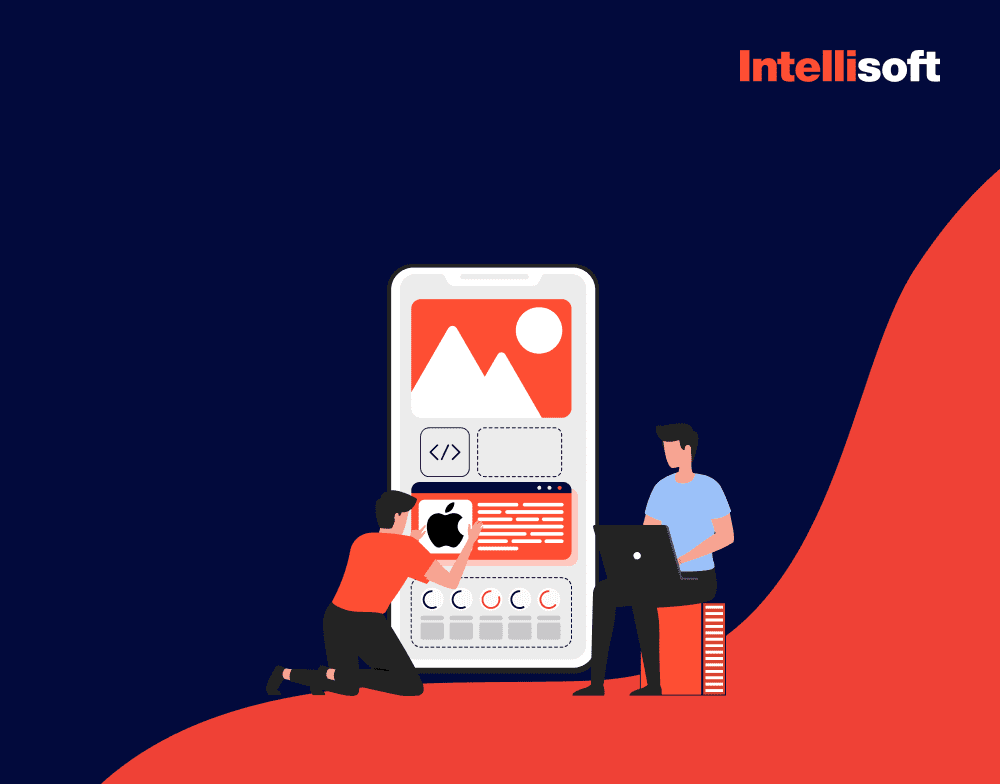With the development of the latest technologies, education has become way easier than it used to be in the past. Now, studying from anywhere in the world, anytime, using a smartphone or a computer, is possible. This digital revolution has empowered students and provided educators with a versatile platform to create lessons, share learning materials, conduct lectures, and administer tests, all through the convenience of smartphones.
Since more and more educational institutions are now going online, they are strategically considering how to develop an educational app to streamline and enhance the learning experience.
What is an education app? These applications have become instrumental in fostering a more efficient educational process, catering to the evolving needs of both teachers and students. The prospect of going beyond traditional classroom boundaries has given rise to a variety of educational apps, each designed with specific purposes in mind.
Considering that there are numerous educational apps for various purposes, one question that always arises is, “How much does it cost to make an educational app?” There’s no universal answer, but it’s possible to provide rough estimates based on the features you want to include, the complexity of the solution, its design, and so on.
IntelliSoft, an educational app development company, has more than 15 years of experience in developing educational apps. Our extensive experience encompasses the dynamic technological shifts, learning methodologies, and user expectations. We use our deep understanding of the educational domain to deliver tailored solutions that align seamlessly with our clients’ unique objectives, and we’re here to guide you through this journey.
Table of Contents
Average Educational App Development Cost

Analysis of Educational App Development Cost Based on Types
Educational app development cost primarily depends on the type of app you wish to create. Educational apps come in various forms. Examples of educational apps include flashcard apps, eBook readers, language learning apps, dictionary apps, student task applications, and more. Therefore, before delving into costs, it’s essential to determine the specific type of app you want to develop.
How much does it cost to build an educational app? Here’s a rough breakdown of costs based on different app types. However, it’s important to note that these estimates are general approximations and may vary depending on specific requirements and development contexts. For precise educational app development cost estimates, tailored to your unique needs, we recommend consulting with our application developers.
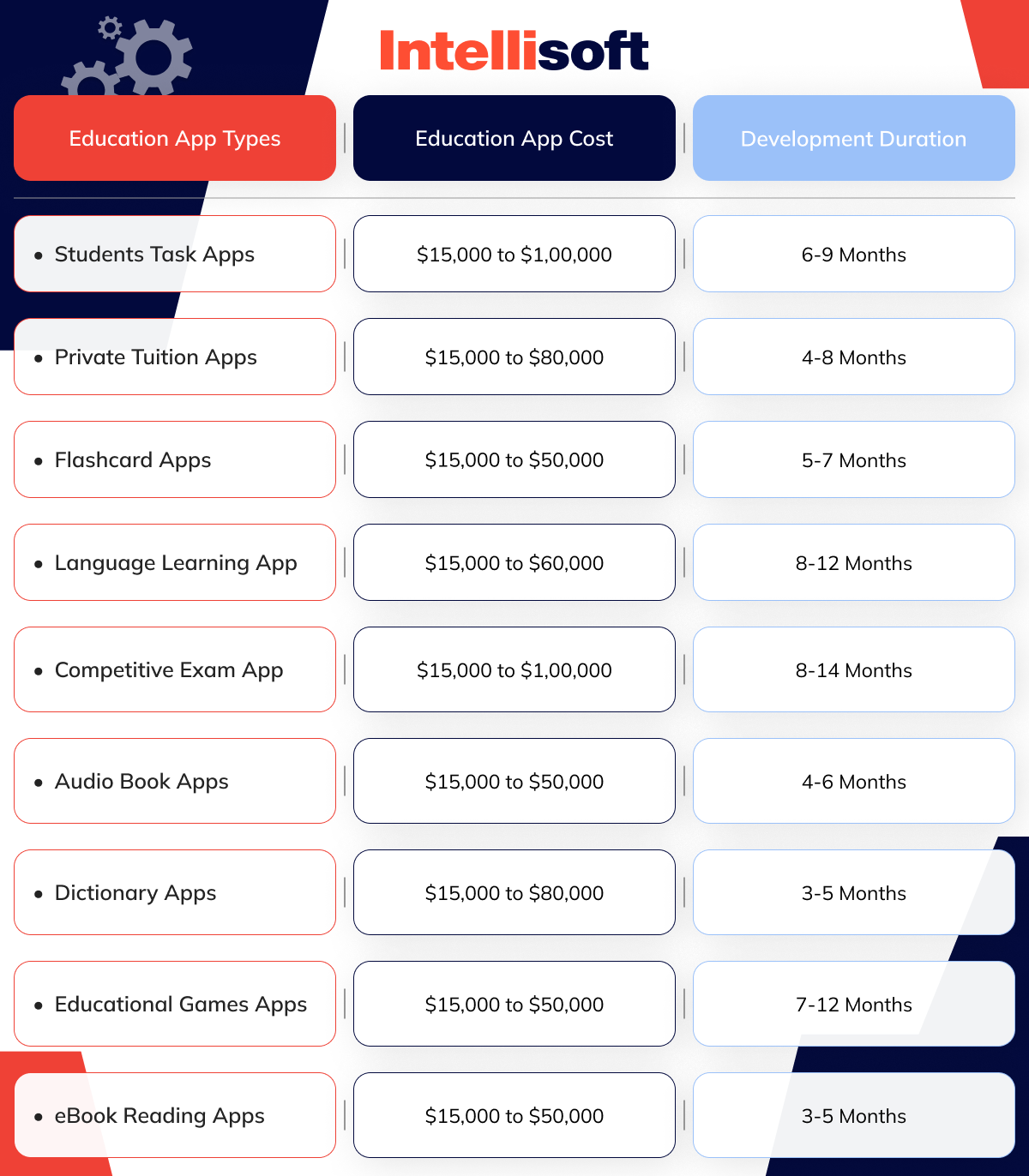
How to Create an Educational App: What Are the Main Features of a Learning App?
In the landscape of educational technology, a learning app’s effectiveness hinges on a myriad of features designed to create an immersive and tailored learning experience. Let’s delve into the key components that contribute to the success of a modern learning app.

User Profiles
User profiles serve as the cornerstone of personalization within a learning app. Enabling students to create and manage their profiles not only fosters a sense of ownership, but also facilitates the customization of their educational journey. Students can track their progress, set preferences, and receive personalized recommendations based on their unique learning patterns.
Interactive Content
Enhancing engagement, learning applications leverage dynamic multimedia elements, such as videos, simulations, and interactive exercises. This approach transforms learning from a passive endeavor into an interactive journey.
Progress Tracking
A progress-tracking system is essential for both students and educators. Real-time monitoring of a student’s progress allows for timely intervention and personalized assistance. Educators, on the other hand, gain valuable insights into individual and group performance, enabling data-driven decision-making.
Assessment and Quizzes
Assessment tools and quizzes serve as checkpoints in the learning journey. By incorporating interactive assessments, learning apps not only evaluate comprehension, but also reinforce knowledge retention. Immediate feedback from quizzes aids in reinforcing concepts and identifying areas that may need further exploration.
Personalized Learning Paths
Learning apps cater to the diverse learning styles and paces of individuals by providing personalized learning paths. Adaptive algorithms assess user behavior, preferences, and performance to customize educational content, ensuring that each student benefits from a tailored and efficient learning experience.
Multimedia Integration
To accommodate various learning preferences, learning apps integrate multimedia elements such as videos, animations, and audio. This multi-sensory approach not only caters to different learning styles but also enhances the overall learning experience by providing diverse perspectives and engaging content.
Gamification Elements
Injecting elements of gamification into learning solutions transforms education into an interactive and enjoyable experience. Gamified features, such as points, badges, and leaderboard systems, motivate learners to actively participate, fostering a sense of achievement and healthy competition.
Discussion Forums and Social Features
Collaborative learning is facilitated through discussion forums and social features within learning apps. These platforms encourage students to engage in meaningful discussions, share insights, and collaborate on projects, fostering a sense of community and enhancing the overall learning experience.
Feedback and Reporting
Timely and constructive feedback is integral to learning. Learning apps provide instant feedback to students on assessments and activities, promoting a continuous improvement mindset. Moreover, comprehensive reporting tools empower educators with actionable insights, facilitating data-driven decisions for optimizing the learning environment.
Variables Influencing the Cost to Build an Educational App
Besides knowing how to create an educational app, you should be aware of the factors that influence its cost. The process of developing an educational app is a dynamic expedition, requiring a delicate equilibrium of technological decisions, project complexities, and resource distribution. To navigate this terrain adeptly, a comprehensive understanding of the primary factors impacting development costs is essential. Each facet plays a pivotal role in shaping the financial panorama of educational app development, spanning platform preferences, project breadth, team composition, developers’ geographical locations, and project timelines.
Platforms
The initial factor influencing the development cost of an educational solution is the selection of platforms. Whether you choose iOS, Android, or a cross-platform solution significantly influences the development trajectory and associated expenses. Each platform presents distinct requirements, development tools, and testing protocols, necessitating careful consideration and strategic planning to optimize costs effectively.
Creating for multiple platforms adds complexity to the project, potentially increasing development time and costs. It’s crucial to carefully evaluate each platform’s target audience and market share to make informed decisions that align with project goals and budget constraints.
Project Scope
The second critical factor shaping the development cost is the project scope, encompassing the educational app’s features, functionalities, and specifications. A well-defined project scope serves as the blueprint for development, providing clarity on what needs to be achieved. Clear project requirements allow for accurate cost estimation, ensuring that resources are allocated efficiently.
Expanding the project scope during development can lead to additional costs and timeline extensions. Therefore, stakeholders must collaboratively establish a comprehensive project scope at the project’s outset, facilitating effective communication and enabling the development team to deliver a product that meets expectations within the defined budget.
Team Composition
The composition of the development team significantly influences the cost dynamics of an educational app project. A highly skilled and specialized team may command higher hourly rates, but the expertise they bring to the table can accelerate development and result in a more polished end product.
Achieving the right balance in team composition is crucial – a team which is too lean might elongate development timelines, while an overly extensive team could lead to unnecessary expenses. By aligning the team composition with the project’s specific requirements, stakeholders can balance cost-effectiveness and the need for specialized skills.
Developers Location
The geographical location of the development team is a critical factor affecting costs. Developers’ hourly rates vary globally, with certain regions having higher or lower living costs and different market standards. Outsourcing to regions with lower labor costs may reduce expenses, but it’s essential to consider potential challenges such as communication barriers and time zone differences.
On the other hand, opting for a local development team may incur higher costs but can offer advantages in terms of cultural understanding, easier collaboration, and effective communication. Assessing the trade-offs between cost and other factors such as communication efficiency, is crucial when determining the optimal location for the development team.
Project Timeframes
Tight deadlines may require additional resources, potentially leading to increased expenses. Rushed timelines can also affect the quality of the development process, compromising thorough testing and optimization.
A well-paced development timeline allows for efficient resource utilization, reducing the likelihood of unexpected costs associated with rushed work. Balancing timely delivery with cost considerations is essential for a successful and cost-effective educational app development project.
Strategies for Lowering the Development Cost of an Educational App
Here are some ways to reduce the cost of developing your educational app.
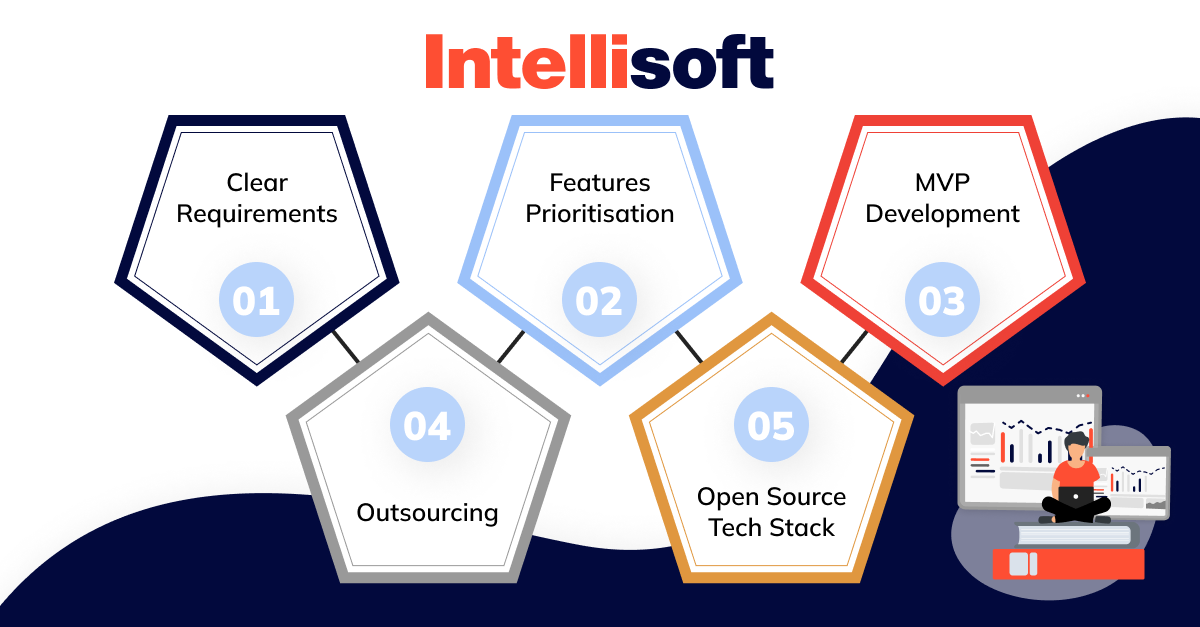
Clear Requirements
Establishing clear and concise requirements is foundational to cost-effective development. A well-defined project scope helps developers understand the essential features and functionalities, minimizing the likelihood of unnecessary work or mid-project changes. Clear requirements serve as a guiding blueprint, streamlining the development process and ensuring efficient resource utilization.
Features Prioritization
Prioritizing features based on their importance and impact allows for a phased development approach. By first identifying and focusing on core functionalities, you can create a Minimum Viable Product (MVP) that meets essential needs. This incremental development approach reduces initial costs and provides the flexibility to enhance and expand the app based on user feedback and evolving requirements.
MVP Development
Developing a Minimum Viable Product (MVP) is a cost-effective strategy that involves building the core features necessary for the app’s functionality. This approach allows for quicker development and deployment, enabling you to gather user feedback early on. With an MVP, you can validate the app’s concept, test its viability, and iteratively enhance it based on user insights, optimizing development costs over time.
Outsourcing
Outsourcing development to regions with lower labor costs can significantly reduce expenses without compromising quality. By tapping into the global talent pool, you gain access to skilled professionals who can contribute to your project at a more cost-effective rate. However, it’s crucial to carefully vet an outsourcing educational mobile app development company to ensure they align with your project goals and quality standards.
Open Source Tech Stack
Opting for an open-source technology stack can contribute to significant cost savings. Open-source frameworks, libraries, and tools are often freely available and well-supported by the community. Utilizing these resources can reduce licensing fees and development time, making it a cost-effective choice while maintaining high-quality standards.
Related Readings:
- Education Without Boundaries: The Ultimate Roadmap to E-Learning Platform Development
- Time-Saving Success: Crafting the Perfect Scheduling App from Concept to Launch
- What Is Cross-Platform App And Why to Choose It?
- How to Build an iOS App for Your Start-up
- Steps to Develop a Successful Mobile App for Android
What is a Tech Stack for eLearning App Development?
Crafting a robust eLearning application involves carefully selecting a technology stack that caters to various aspects of development. Let’s delve into the key components of an eLearning app’s tech stack:
Front-End Development
React.js. A widely used JavaScript library for building interactive user interfaces, React.js facilitates the creation of dynamic and responsive front-end components.
Angular. A powerful front-end framework by Google, Angular is suitable for building complex and feature-rich user interfaces with a modular architecture.
Vue.js. A progressive JavaScript framework, Vue.js is known for its simplicity and ease of integration, making it an excellent choice for smaller to medium-sized eLearning apps.
Back-End Development
Node.js. Leveraging JavaScript on the server side, Node.js ensures a consistent language across the entire application. It’s well-suited for handling concurrent connections in real-time applications.
Django.: A high-level Python web framework, Django is known for its simplicity, scalability, and rapid development capabilities, making it suitable for eLearning platforms.
Ruby on Rails. An elegant and developer-friendly framework, Ruby on Rails simplifies back-end development, offering conventions that streamline the coding process.
Mobile App Development
React Native. For a cross-platform approach, React Native allows developers to use React.js to build mobile apps for both iOS and Android, optimizing development time and effort.
Flutter. Developed by Google, Flutter enables the creation of natively compiled applications for mobile, web, and desktop from a single codebase, enhancing efficiency in mobile app development.
Cloud Services
Amazon Web Services (AWS). AWS provides a comprehensive suite of cloud computing services, including storage, computing power, and databases, ensuring scalability and reliability for eLearning apps.
Microsoft Azure. Azure offers cloud solutions for various purposes, allowing developers to leverage services like Azure Storage and Azure SQL Database for scalable and secure storage.
Authentication and Authorization
OAuth 2.0. For secure user authentication, OAuth 2.0 is a widely adopted protocol that allows third-party applications to access user data without exposing credentials.
JSON Web Tokens (JWT). JWT is a compact and self-contained way to transmit information securely between parties. It is commonly used for authentication and authorization in eLearning applications.
Real-Time Communication
WebSocket. To enable real-time communication, WebSocket provides a persistent connection between the client and server, facilitating instant updates and notifications in eLearning platforms.
Socket.io. A JavaScript library for real-time web applications, Socket.io simplifies bidirectional communication between clients and servers, enhancing the interactivity of eLearning apps.
Security
SSL/TLS. Implementing Secure Sockets Layer (SSL) or Transport Layer Security (TLS) ensures the encryption of data transmitted between the client and server, enhancing the security of user interactions.
OWASP. Following the Open Web Application Security Project (OWASP) guidelines helps address common security issues, ensuring that eLearning apps adhere to industry best practices for security.
Version Control
Git. As a distributed version control system, Git facilitates collaboration among developers by tracking changes in the source code, ensuring version control and streamlined project management.
Remember: Selecting the right tools and technologies from this tech stack depends on the specific requirements, scalability needs, and development goals of your eLearning app. Careful consideration of these components contributes to the creation of a robust and efficient educational platform.
How to Monetize an Educational App?
Monetizing educational apps is not just about generating revenue; it’s about striking a balance between profitability and delivering value to users. In today’s digital age, where learning is increasingly accessible through mobile devices and online platforms, educational app developers have a bunch of monetization strategies at their disposal. Let’s explore these strategies in detail:

Freemium Model
The freemium model is a popular choice for educational apps, allowing users to access basic features for free while offering premium content or advanced features for a fee. By offering a taste of what the app has to offer, developers can entice users to explore further and invest in additional content or features that enhance their learning experience.
This model fosters user engagement and allows for gradual upselling, making it a win-win for both users and developers.
Subscription Plans
Subscription-based pricing models offer users access to premium content or features in exchange for a recurring fee. This approach ensures a steady stream of revenue while encouraging long-term engagement with the app.
Subscription plans can be tailored to cater to different user needs and budgets, providing flexibility and value to a diverse user base. Additionally, offering incentives such as exclusive content or discounts for annual subscriptions can incentivize users to commit to long-term plans, further enhancing revenue potential.
In-App Purchases
In-app purchases allow users to unlock additional content, features, or virtual goods within the app. This model provides users with the flexibility to customize their learning experience by purchasing content or features that align with their interests and goals.
Developers can offer a variety of in-app purchase options, such as individual lessons, study guides, or premium courses, catering to different learning preferences and budgets. By providing valuable content and convenience, in-app purchases can drive revenue while enhancing user satisfaction and engagement.
One-Time Purchases
One-time purchases involve charging users a single fee for access to the app or specific features. This straightforward pricing model appeals to users who prefer upfront payments and clear value propositions. Developers can offer different pricing tiers or bundles to accommodate varying user needs and budgets, ensuring accessibility while maximizing revenue potential. Moreover, transparent pricing and clear communication of the app’s features and benefits can instill trust and confidence in users, driving conversions and fostering positive user experiences.
Ad-Based Monetization
Ad-based monetization involves displaying advertisements within the app and generating revenue through ad impressions or clicks. While ads can disrupt the user experience if not implemented thoughtfully, they can also provide developers with a reliable revenue stream, especially for apps with a large user base and high engagement levels.
Developers can leverage targeted advertising and native ad formats to deliver relevant and non-intrusive ads that complement the app’s content and enhance user engagement. By balancing content and ads, developers can monetize their apps effectively while maintaining a positive user experience.
White Labeling and Licensing
White labeling and licensing offer developers an additional revenue stream by allowing them to license their app’s technology or content to other organizations or institutions. By white labeling their app, developers can rebrand it with a partner’s branding and customize it to meet their specific needs, such as integrating it with existing learning management systems or corporate training programs.
Licensing agreements can provide developers with upfront fees or royalties based on usage, expanding the app’s reach and generating passive income. Moreover, partnering with educational institutions or businesses can provide developers with valuable insights and opportunities for collaboration, further enhancing revenue potential.
Corporate Partnerships and Sponsorships
Corporate partnerships and sponsorships offer your clients an opportunity to integrate branded content, courses, or features within your app in exchange for funding or resources. By collaborating with corporate partners or sponsors and enhance the app’s user value proposition.
This model allows you to monetize your apps without directly charging users, making it an attractive option for apps targeting niche or specialized markets. Corporate partnerships can provide you with access to industry expertise, resources, and networking opportunities, driving innovation and growth.
Certification Programs
Offering certification programs or assessments within the app allows users to gain official recognition or accreditation for their learning achievements. By partnering with accrediting bodies or industry organizations, you can offer certification programs that validate users’ skills and knowledge, enhancing the app’s value proposition and revenue potential.
Certification programs can be offered as standalone products or bundled with premium subscriptions, incentivizing users to invest in their learning journey.
Moreover, you can leverage certification programs to attract corporate clients or employers seeking skilled professionals, further expanding revenue opportunities and driving user engagement.
How Can IntelliSoft Help With Education App Development?
In the expansive realm of education, each sector presents its own set of challenges and needs. At IntelliSoft, an educational app development company, we acknowledge the diversity within the educational landscape and specialize in crafting customized solutions to address the specific requirements of different organizations.
Our dedication is steadfast across every sector; to deliver bespoke educational apps that enhance the learning journey. Through a deep understanding of the distinct needs of each category, we strive not only to meet but to surpass expectations with our software solutions.
From providing comprehensive support for EdTech start-ups, including technical requirement gathering and project architecture suggestions, to developing integrated learning platforms that foster collaboration and communication, we offer end-to-end solutions.
Our advanced assessment tools, powered by AI, provide educators with detailed insights into student performance, enabling them to curate better learning paths. Moreover, our immersive educational content, utilizing AR, VR, and gamification, makes learning fun and memorable for students.
With a focus on safety and security protocols, compliance with industry standards, and a commitment to accessibility and inclusion, our software solutions ensure that all students have equal opportunities for success.
From continuous learning paths to professional development platforms for educators and seamless integration with existing systems, our educational app development company strives to empower institutions with the tools and guidance needed to achieve their educational goals. Contact us, and let’s develop an app that takes education to new heights.
